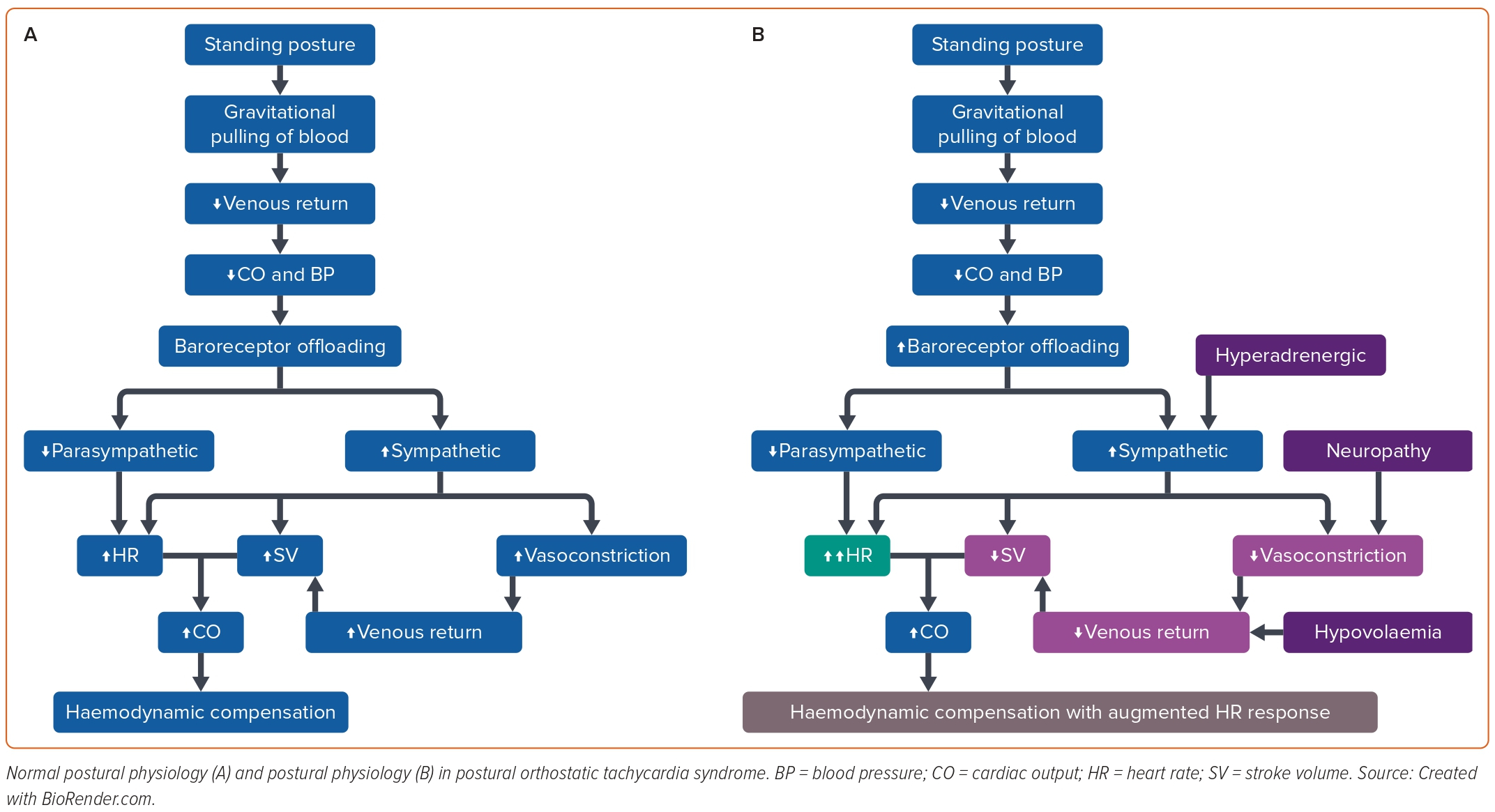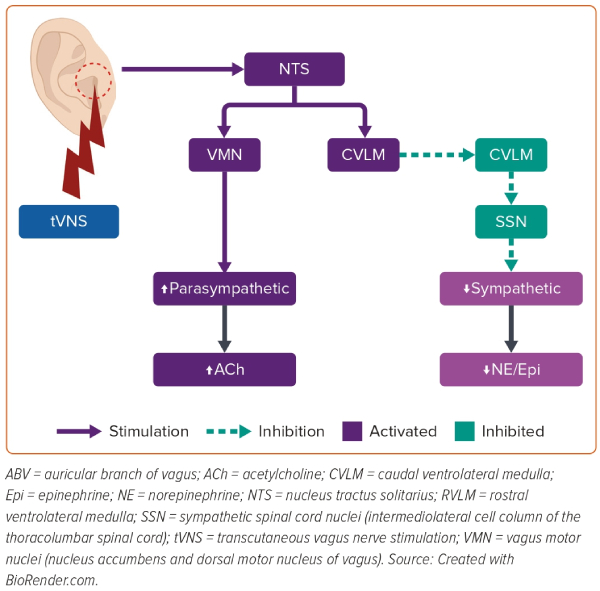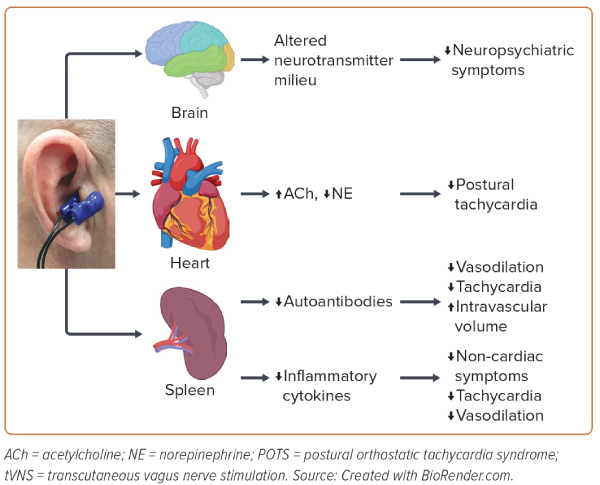Non-invasive Vagus Nerve Simulation in Postural Orthostatic Tachycardia Syndrome
Abstract
Postural orthostatic tachycardia syndrome (POTS) is a chronic debilitating condition of orthostatic intolerance, predominantly affecting young females. Other than postural tachycardia, symptoms of POTS include a spectrum of non-cardiac, systemic and neuropsychiatric features. Despite the availability of widespread pharmacological and non-pharmacological therapeutic options, the management of POTS remains challenging. Exaggerated parasympathetic withdrawal and sympathetic overdrive during postural stress are principal mechanisms of postural tachycardia in POTS. Non-invasive, transcutaneous, vagus nerve stimulation (tVNS) is known to restore sympathovagal balance and is emerging as a novel therapeutic strategy in cardiovascular conditions including arrhythmias and heart failure. Furthermore, tVNS also exerts immunomodulatory and anti-inflammatory effects. This review explores the effects of tVNS on the pathophysiology of POTS and its potential as an alternative nonpharmacological option in this condition.
Keywords
Postural tachycardia, vagus nerve stimulation, parasympathetic nervous system, sympathetic nervous system, sympathovagal balance,
Disclosure:The authors have no conflicts of interest to declare.
Received:
Accepted:
Published online:
Select format
NIH/NHLBI R01HL161008 to SS. PC is supported by the George Mines Travelling Fellowship from the Canadian Heart Rhythm Society.
Correspondence Details:Stavros Stavrakis, University of Oklahoma Health Sciences Center, 800 Stanton L Young Blvd, Suite 5400, Oklahoma City, OK 73104, US. E: stavros-stavrakis@ouhsc.edu
This work is open access under the CC-BY-NC 4.0 License which allows users to copy, redistribute and make derivative works for non-commercial purposes, provided the original work is cited correctly.















